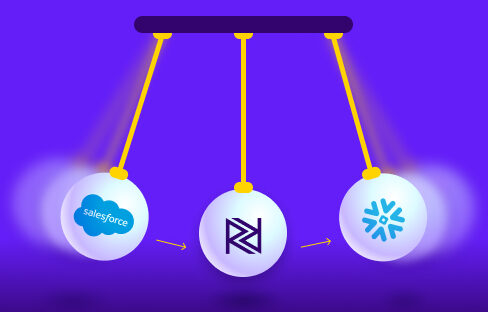“So I guess you’ll be leaving me now …”
If you are of a certain age then you will recognize the lyrics of the famous Level 42 song, “Leaving Me Now” from 1985. For reference, here’s the song for those lucky not to be old enough. The lyrics are about a romantic relationship that comes to an end.
In times of economic uncertainty and a whirlwind of budget cuts, bootstrapped companies with smaller data teams are hanging by the thread. With more companies investing in cloud technology and migrating databases to the cloud, designing the right data infrastructure becomes paramount.
The pressure to modernize legacy data stacks and adopt cloud-based analytics in order to remain competitive is immense. As business needs and use cases continually grow in their complexity – legacy data stacks and the old way of doing things just doesn’t cut it anymore.
To survive and thrive in the present and future, smaller data teams need to reevaluate their data pipelines and workflows to scale efficiently and keep up. Unlike Enterprises, who have the luxury to train, experiment in learning, and specialize in one domain – smaller data teams must be agile and have all hands on deck. They need to ramp up quickly with different tooling, take on multiple roles, and get creative in order to build out solid data processes and frameworks that yield quick results.
The struggle for data engineers is real! According to this survey: 97% of data engineers experience burnt out due to manual repetitive tasks, poor workflows and incoherent ad-hoc project requests.
It’s no surprise that data engineers are quietly quitting in search of a more sustainable work-life balance. So don’t be surprised if one random Tuesday afternoon, your best data engineer blind sides you with a resignation. After absorbing the initial shock, you start putting a job description together for your next hire. But with the shortage of data engineers in the market chances are slim the role will be filled in anytime soon. It’s only then, during that moment of realization that it hits you – there’s no replacement or match to what’s going to be“Leaving you now”.
Unfortunately, there’s no way around it. The reality is many data teams have too many moving parts and applications for:
- Extract and Load
- Data Orchestration
- Transformation
- Cloud Functions for Custom APIs
- Cloud Function for complex transformations
As the number of applications increases so does the cost of the engineers needed to create, organize and maintain the stack. It’s no simple task and for those smaller data teams losing a vital cog in the team leads to major disruption in planned work and also extra time needed to solve inevitable problems.
Hiring great data engineers is not a trivial or inexpensive task. Even when they are hired, there will be an inevitable ramp time. Learning one tool is difficult enough but the five needed to complete the Modern Data Stack is verging on painful.
So it’s time for a rethink. It’s time to heal those broken wounds and face the facts. Data engineers are in short supply and they’re quitting at a faster pace than ever. After dealing with plenty of emotional breakups ourselves, we decided to build an in-house solution to accommodate the inevitable heartache.
Rivery was created from the ground up as an easy to use application which included all the pieces of the Modern Data Stack wrapped up in one license, one support contract and most importantly one learning curve. Although we cannot stop your data engineers from leaving, we can provide you with the ice-cream, chocolates and comfort blanket to assure life will go on. We’ll handle the complex stuff to ensure your data workflows will continue to flow and scale with whichever project you’re currently running.
Want to free up your data engineer’s time and make their life 10X easier?
Join thousands of top-performing data teams who use Rivery every day to stay on top of their data stack, instantly updating pipelines and APIs to spend more time on high-impact work than mindless data management.
Try Rivery for free. Or Request a demo to speak with a Rivery data expert right now.
Minimize the firefighting. Maximize ROI on pipelines.





